Click here to view in a new window.
Jesus Cleansing the Temple – Artists’ renditions
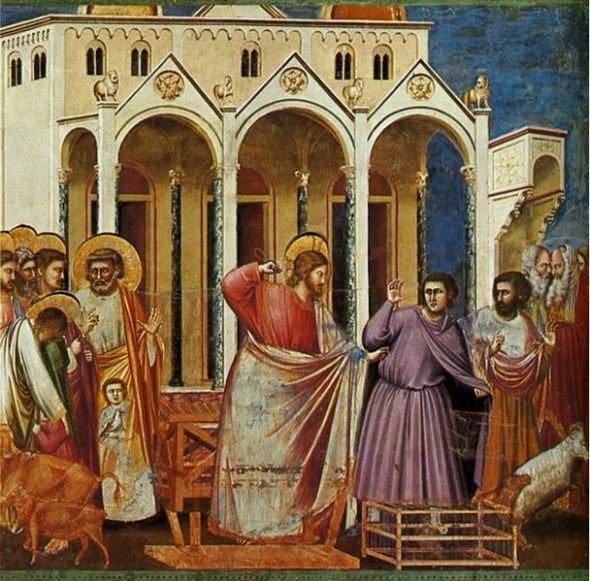
Giotto – "Explusion of the Moneychangers from the Temple" (1304-1306)
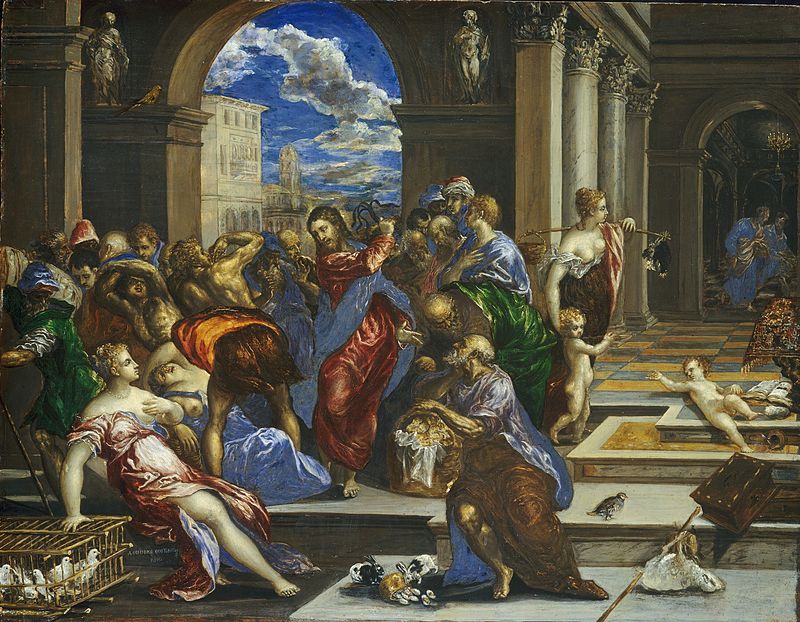
El Greco– "Purification of the Temple" (1570’s)
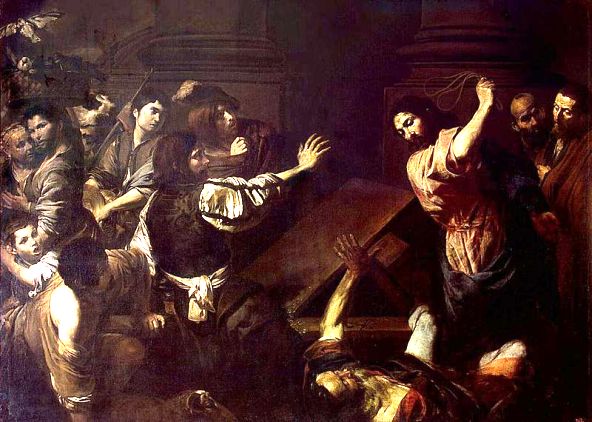
Valentine de Boulogne – "Expulsion of the Moneychangers from the Temple " (1620-1625)
Exploring the Temple Incident
John 2:13-22 -Exploring the Temple Incident
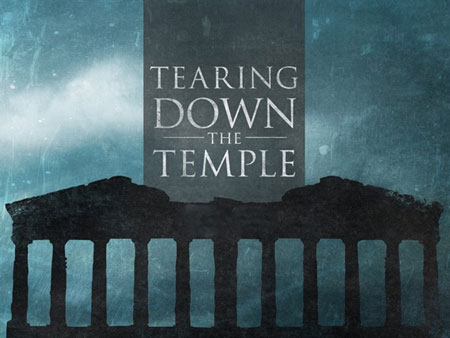
We explore this verse in John’s Gospel:
“Making a whip of cords, he drove all of them out of the temple, both the sheep and the cattle. He also poured out the coins of the money changers and overturned their tables. He told those who were selling the doves, “Take these things out of here! Stop making my Father’s house a marketplace!” His disciples remembered that it was written, “Zeal for your house will consume me.” The Jews then said to him, “What sign can you show us for doing this?” Jesus answered them, “Destroy this temple, and in three days I will raise it up.” The Jews then said, “This temple has been under construction for forty-six years, and will you raise it up in three days?” But he was speaking of the temple of his body. “
1. The Setting
The story takes place within the 3rd temple (1st Solomon’s, 2nd one returning from Babylonia). Herod’s temple did take a generation to build. He ruled 36 years and the temple took 46 years to construct – and it was huge! The Temple area had been enlarged to a size of about thirty-five acres. Today the Western Wall, the so-called Wailing Wall, is all that remains of the ancient walls of Herod’s Temple
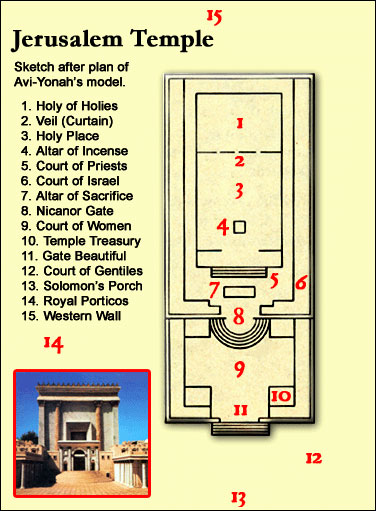
More specifically, the events took place outside in the Court of Gentiles. There was a market there selling sacrificial animals and birds outside the place where the priests worked. There was also a money exchange, since the Temple dues had to be paid in Tyrian coinage, and most people had Jerusalem coinage only. This meant that the atmosphere in the Court of the Gentiles was like an oriental bazaar where merchants haggled with Jewish pilgrims – like souvenir shops clustered round modern-day cathedrals
The market did provide a valuable service. Those selling animals were providing a service to those who needing an animal to sacrifice during Feast time. Obviously this had been approved by the Jewish leaders in the temple. This was a great convenience to Jews traveling great distances, since they did not have to have livestock in tow. They could buy the necessary sacrificial animals right at the temple.
The money changers were providing a valuable service. A tax was collected from every Israelite who was twenty years old. This was due during the month preceding the Passover and was either sent in by those who lived at a distance or paid in person by those who attended the festival. They had to pay in Jewish money and not by a foreign coin and nbsp;work, to enjoy working, and to experience thenbsp;work, to enjoy working, and to experience thethus the need to have their money exchanged
The SALT blog for Lent 3, March 3 – “New ways of Encountering God – seeing and believing”
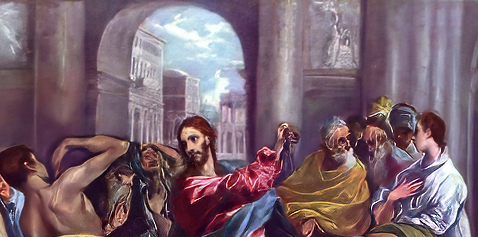
The Salt Blog Takeaways
1. Gospel – Temple will give way to a new means of encountering God
From the Gospel -“In the temple he found people selling cattle, sheep, and doves, and the money changers seated at their tables. Making a whip of cords, he drove all of them out of the temple, both the sheep and the cattle. He also poured out the coins of the money changers and overturned their tables.
From SALT commentary on Lent 3
Arts and Faith, Lent 3, Year B
By Daniella Zsupan-Jerome, assistant professor of liturgy, catechesis, and evangelization at Loyola University New Orleans.
Quentin Matsys, the Flemish master of the 16th century, was known for his caricature painting and satirical commentary. In his Jesus Chasing the Merchants from the Temple, we see his caricatural style shine. Each person in this image has a unique expression, even the lamb being carried away in the center of the scene. Matsys was not one for flattery—the faces of some of the merchants border on grotesque, though not all. He is careful to maintain these as human faces, ones we can identify with and see ourselves in.
The scene includes the range of characters noted in the Gospel story. Christ is in the center, driving out the merchants with his rope whip, three merchants receiving his blows. One of them, perhaps a money changer, lies on the ground, his table flipped, his coins scattered. Another merchant is just making his escape with a lamb on his back, while the most grotesque one on the left is trying to get away with his goods under his arms. In the back left, three distinguished-looking men observe—these are perhaps the Jewish leaders who debate with Christ about the Temple in John’s Gospel. To the right of the scene are three additional onlookers: one more merchant partially concealed by a sack, a seated figure, and a Temple-goer, whom we see in profile.
The setting evokes the idea of the Temple, but in fact it is a high-Gothic church contemporary to the artist’s time, perhaps the Cathedral of Antwerp, the town where the artist was most active. Likewise, the colorful clothes each character wears tell us that Matsys set this scene not in the Temple of first-century Jerusalem, but in his own 16th century. This is a not-so-subtle satirical commentary suggesting that perhaps the Church at his time needed Jesus’ cleansing. Yet, through the use of thoroughly human faces, it is not just the people of Matsys’s time that needed repentance and purification. The image invites us to see ourselves in it as well, to see and acknowledge honestly those areas of our lives needing a major cleaning. The variety of faces offer several entry points for us—the person on the ground, the one escaping, the one looking on, the one hiding, the one at a critical distance—where do we find ourselves in this im
The Sermons in February

Feb. 25 – Lent 2- “Suffering” – Rev. Catherine Hicks
The sermon was about suffering. Three types of suffering – those due to natural causes, sin, redemptive were included.
“God does not ask us to suffer needlessly. But God does hope that we will accept redemptive suffering if our suffering can contribute to the growth of goodness and justice in the world around us, and if our suffering and self-denial could possibly lead to the redemption and healing of even one other person by letting God’s grace work through us.”
The Creeds Class, Part 1, Feb. 21, 2024
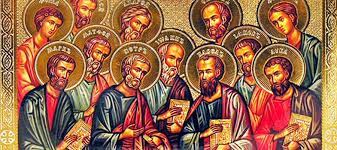
We had 8 people online for the first class, Feb 21, 2024.
Weekly Sessions
1. Why we have the creeds and the origin?
2. Creed about God – “I believe in God, the Father almighty”.
3. Creed about Jesus.
4. Creed about the Holy Spirit.
5. Creed about baptism, resurrection.
Creeds are ultimately for the unity of the Church containing the beliefs that are central to the faith. They hold us together. They are used to teach new members.
Village Harvest – Feb., 2024 – a positive month
We served 110 at the Feb. 21, 2024 Village Harvest. After a slowdown to 91 last month, we were back at the plateau of 110-112 from achieved fron Nov and Dec. last year. This was 10 people above the earlier period Aug to Oct. which served between 90 and 100.
Totals for the first two months show some consistency from 2021-2024. The total is between 200 and 205 except for 2023 which was substantially lower at 137. We are not sure what happened but weather was not an issue.
“Letting Go” – Diocese of Atlanta, Week 2
From Bishop Wright – “Jesus was talking about his impending rejection, suffering, death and ultimate resurrection when Peter interrupted. He interrupted and criticized Jesus for what he was saying. Jesus was declaring the power of letting go of control precisely as Peter tries to control the moment, the message and the man. Peter found out in that exchange, that trying to control Jesus will get you labeled “Satan.” Whenever we’re talking about control, we should be investigating motivations for exerting control, especially our own. What may have been controlling Peter that day was fear. Fear is always seeking to motivate us. Always subtly vying for control of us. Stalking and shaping our worldview, our politics, our relationships, even our lives with God. (There is a direct correlation between how much we attempt to control others and our own lack of freedom.) What Jesus was proclaiming “openly,” before he was interrupted was his refusal to be obsessed with control over his reputation, his enemies, the nature of his death or the means by which God would redeem the situation.”
God’s Garden makes pretzels for Lent, Feb. 25
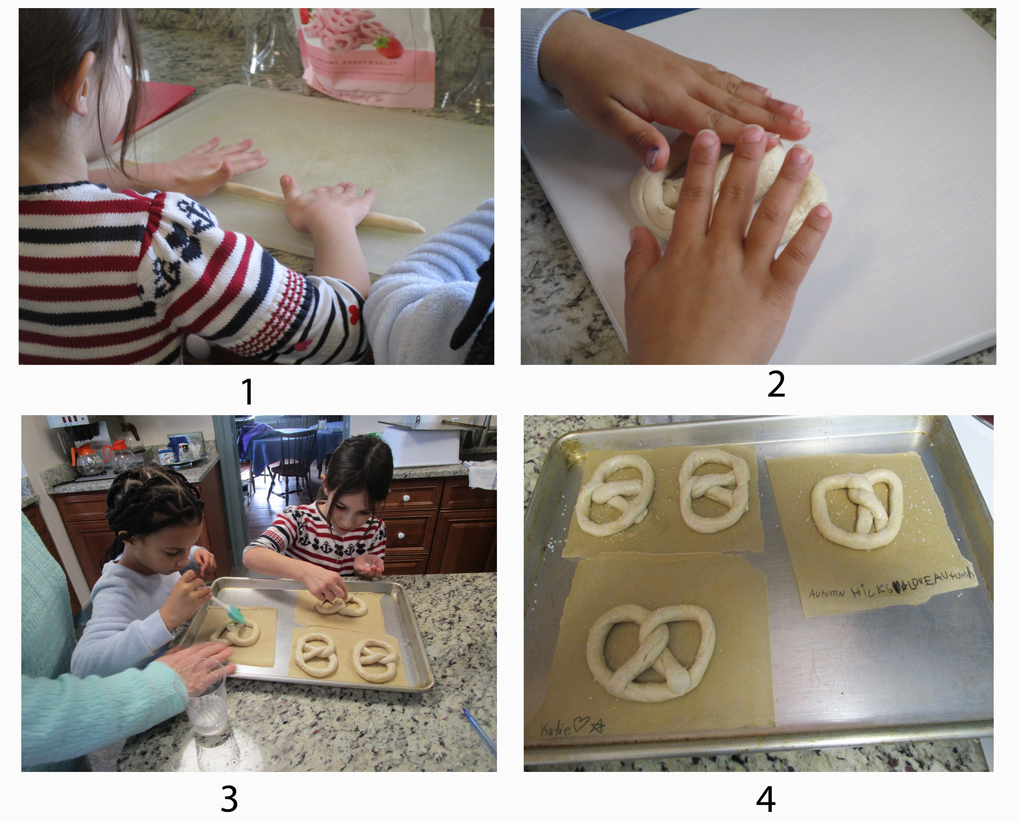
Pretzels for Lent date back to the early Church, perhaps sometime in the 4th century. During that time it was common for Christians to fast during the season, abstaining from meat, dairy, fats, and sweets. These quick breads are made with only a tiny bit of sugar to activate the yeast and no fat – they are entirely flour, water and yeast! The simplicity of water, salt, and flour suggested commitment and attention, not least also prayer.
As to the shape: pretzels are made in the shape of two arms crossed in prayer. In Latin, the pretzel is called “bracellae”, meaning little arms. The word “bracellae” became the German “bretzel” and “pretzel.”
Another story places the origin of the word in “pretiola” which means little reward, so pretzels might have been given as an award to a child who had learned her prayers!
The children had fun making pretzels and they even sent some home. The dough was bought so that the activity could fit in the time frame and still have time to work on the Lord’s Prayer.
Here’s a photo gallery showing the steps in making these Lenten treats
Videos, Feb. 25, 2024, Lent 2
01 Opening Hymn – The God of Abraham praise
02 Readings – Old Testament, Psalms
03 Readings – Epistle
Sermon, Lent 2, Feb. 25, 2024 – Suffering
Sermon, Second Sunday in Lent, Year B
Mark 8:31-38
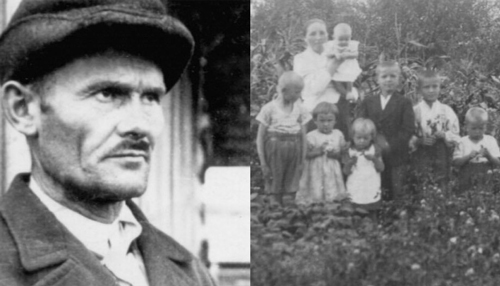
Jozef and Wiktoria Ulma with their family in Poland
Although we don’t generally like to hear about or to think about suffering, Jesus reminds us in today’s gospel that following him as a disciple will include suffering.
As I’ve thought about suffering this week, it’s been useful to consider three broad categories of suffering.
The first category is physical suffering due to natural causes.
Bulletin, Second Sunday in Lent, Feb. 25, 2024
Click here to view in a new window.
Sunday’s Links, Feb. 25, 2024
First Sunday in Lent
Lector: Elizabeth Heimbach
Chalice Bearer: Johnny Davis
Altar Cleanup: Elizabeth Heimbach
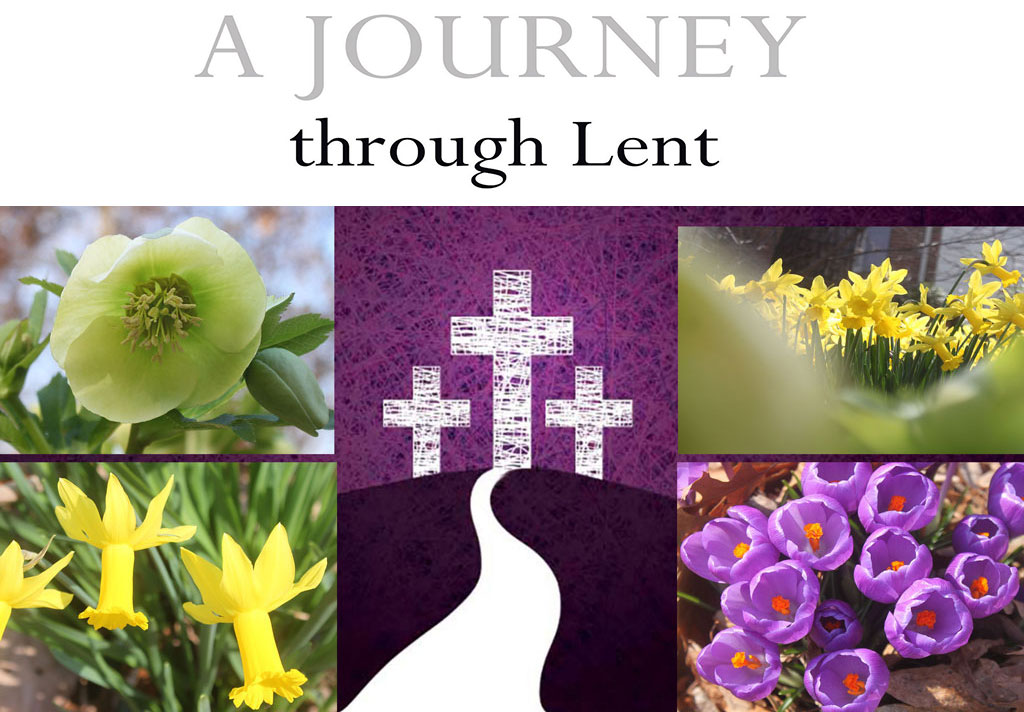
Quick link to Feb, 2024 Lent Calendar
Quick link to March, 2024 Lent Calendar
Recent Articles, Sun., Feb. 25
Photos
Videos
God’s Garden, 10:00-11am
Bulletin
Lectionary
Sermon
Commentary Second Sunday in Lent
Visual Lectionary – Vanderbilt
“Letting Go” – Diocese of Atlanta. Peter tries control
Voices this week in Lent
Creeds class, Feb. 21
St. Matthias, Feb 24
Ministries
Village Harvest, Feb. 21
God’s Garden – Making Prezels, Feb. 25
God’s Garden- Learning the Lord’s Prayer, Feb. 18
God’s Garden – The Alleluia Banner, Part 2, Feb. 11
The Alleluia Banner, Part 1, Feb/ 4
Lenten Study – The Creeds
Creeds Class, Feb. 21
Souper Bowl Sunday results
Discretionary Fund donations Feb. 11
Bingo Night Jan 26, 6pm-7:30pm
Sacred Ground, Jan., 2024
Lent began Feb. 14 (Ash Wednesday)
Lent at St. Peter’s
Lent Basics
3 key points about Ash Wed
Ash Wed. 2024, 7pm service
“Letting Go”, Diocese of Atlanta
Conversation about Ash Wed
Lent Stations:Vices & Virtues
Black History Month, Feb., 2024
Black History month
Absalom Jones remembered Feb. 13
Rosa Parks birthday Feb. 4
Visit to Belle Grove, Feb. 2018
“God’ Garden”, Feb. 25, Talking about Prayer, Making Pretzels
This week fresh on learning the Lord’s Prayers, the children will talk more about prayer and make pretzels.

“A Pretzel to remind us of arms crossed in prayer is a lenten treat for us to share!”
The word “pretzel” comes from the German translation of the Latin word for little arms, “bracellae.”
Pretzels for Lent date back to the early Church, perhaps sometime in the 4th century. During that time it was common for Christians to fast during the season, abstaining from meat, dairy, fats, and sweets. These quick breads are made with only a tiny bit of sugar (or honey, if you prefer) to activate the yeast and no fat – they are entirely flour, water and yeast!
Another story places the origin of the word in “pretiola” which means little reward, so pretzels might have been given as an award to a child who had learned her prayers. Appropriate for this class.
Lent 2, Year B, Feb 25, 2023
I. Theme – Justification by Grace
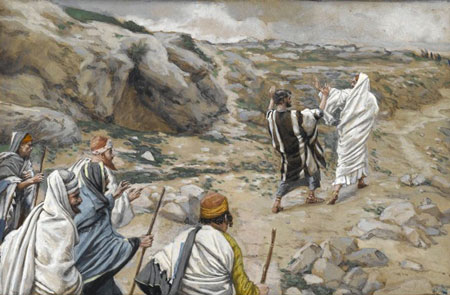
"Get Behind Me Satan"- James Tissot – between 1886 and 1894
The lectionary readings are here or individually:
Old Testament – Genesis 17:1-7, 15-16
Psalm – Psalm 22:22-30 Page 611, BCP
Epistle –Romans 4:13-25
Gospel – Mark 8:31-38
As Suzanne Guthrie writes this week
All the scripture readings for Sunday reference faith in some way. God initiates a reciprocal pact of faith with Abraham. The Psalmist remembers God’s former faithfulness in order to find faith in present distress despite the jeering of companions. Paul considers how Abraham’s irrational faith blessed him. Jesus asks his followers to follow him in faith to the Cross.
Commentary by Rev. Mindi Welton-Mitchell:
Continuing our journey of Lent, we are reminded of the covenants of God and God’s faithfulness.
Last week we remembered the covenant with Noah; this week, we remember God’s covenant with Abraham and Sarah. Abram and Sarai were old, too old to have children as they had always wanted, yet God promised them there would be a great nation descended from them. Abraham and Sarah did live to see their son Isaac; they did not live to see their grandchildren or great-grandchildren, did not live to see the wondrous family of Israel. But in their lifetime, they saw the beginning of God’s great covenant being fulfilled, and we have yet to see the end. God’s faithfulness endures forever.
Psalm 22 begins with lament, abandonment and loss, but by the time we get to verse 23 where we begin, there is hope, there is remembrance of God’s covenant, especially for the poor and the lost–there is good news. God does not abandon or forget, but it may be that God’s covenant comes to fulfillment in “a people yet unborn” (vs. 31). Wait for the Lord.
Mark 8:31-38 tells of where Peter misunderstands who Jesus is and what the Messiah is about. Just before this, Peter had declared Jesus to be the Christ, the son of the living God. The Living God is the God of Abraham, Isaac and Jacob, as Jesus reminds the Sadducees in chapter 12 when they attempt to trap Jesus in a question about the resurrection. God is the God of the Covenant, which has begun but has not been fulfilled. Peter saw Jesus as his Messiah, and Peter’s view of the Messiah was not one who went to the cross, rejected, and died. Peter did not understand how God’s covenant would be fulfilled in this way, because Peter had his own version of who the Messiah was. Perhaps Peter though Jesus would be an earthly king, with an earthly kingdom. Being rejected and killed was not part of an earthly messiah plan. Peter rebukes Jesus, because Jesus does not fulfill the image of messiah that Peter believed in. How often do we set our minds on human things? How often do we want to see God’s covenant, God’s promises, fulfilled now and to our benefit? Or do we understand from the Scriptures, the story of our faith, that God’s covenant has been revealed, that promises have been made, but that what we see is a glimpse, and there is so much more to come. Even our understanding of Jesus is not full. But the disciples, who were with Jesus for so long, who were raised with the Hebrew scriptures, still did not understand. So we still only understand in part.
Romans 4:13-25 is Paul’s reflection on the covenant of God with Abraham, and that it all depends on faith. Faith supersedes understanding. To paraphrase Anselm, “I do not understand in order to believe; I believe so that I may understand.” Paul looks at Abraham, who in Paul’s opinion did not waver in his faith but trusted in God’s promises. So we, too, are to trust in God, and trust in Jesus the Christ and understand that what we see is not fulfilled yet.
As we journey through Lent to the cross, we know also that the Resurrection lies beyond the cross. We have yet to experience it though we believe it, and we know we have this promise in Christ. But we need to remember that at times we will be like Peter and get it wrong. We will get impatient, we will struggle, we will doubt. We are human, just like the disciples, and we will make false assumptions and jump to conclusions. But we need to be patient, we need to wait, and we need to know that we do not see the full picture yet. As Paul says in 1 Corinthians 13, now we see in a mirror dimly, but then we will see face to face. Hold on. Wait for the Lord. We will see a glimpse in our lifetime, but know that we hope for so much more to come.
